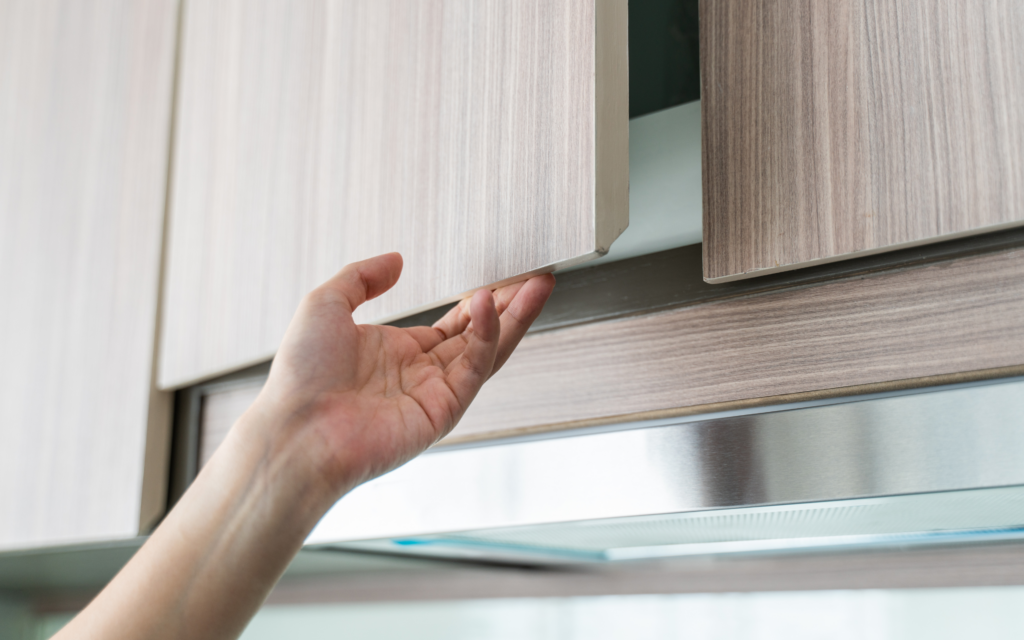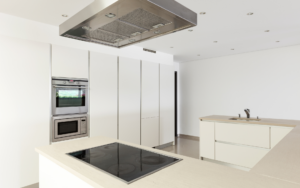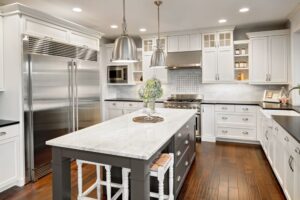Kitchen cabinets set the foundation for form and function in your culinary headquarters. They dominate the aesthetic, yet can be frustrating if they don’t store your pots, pans, and plates with seamless simplicity.
But with hundreds of options to consider, where do you even begin choosing cabinets tailored to your space and needs?
This comprehensive guide will walk you through the entire process, from measurements to materials to clever organizational tools. We’ll explore the pros and cons of various cabinet constructions, finishes, and styles. You’ll discover how to maximize every inch wisely.
Table of Contents
Different Types of Cabinets
There are several main types of cabinet construction and door styles to consider:

Frameless vs. Framed Cabinets
Frameless, or European-style cabinets, have no face frame around the cabinet box. The doors attach directly to the sides of the cabinet, providing a smooth finish, and streamlined look. Frameless cabinets make better use of interior space, but may not feel quite as sturdy without the frame.
Framed cabinets have a face frame – usually 1-1/2″ to 2-1/4” wide – around the front of the cabinet box for sturdiness. The cabinet door then attaches to the face frame. Framed cabinets feel more substantial, but the frame takes away a bit of usable space inside.
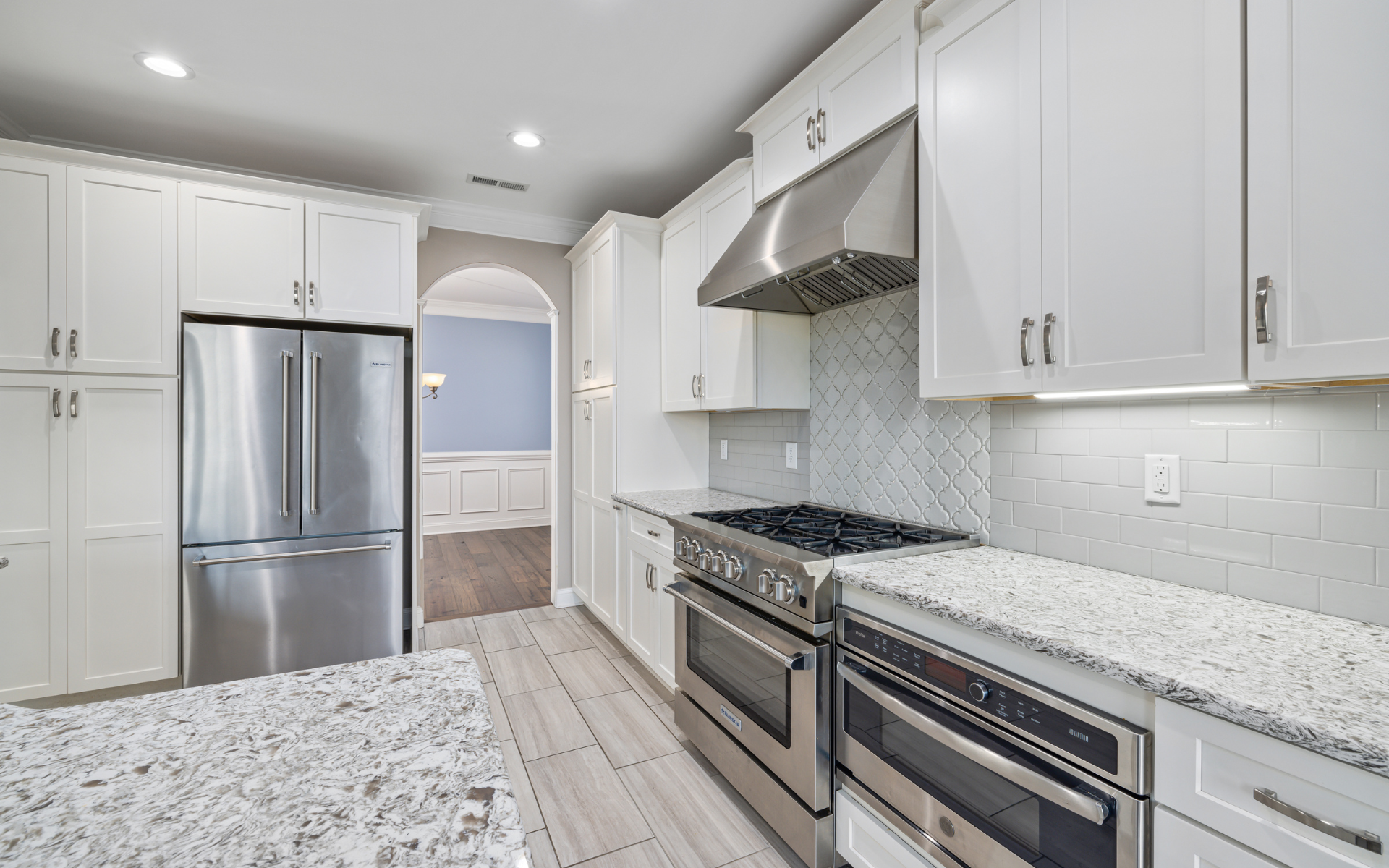
Stock vs. Semi-Custom vs. Custom Cabinets
Stock cabinets come in a standard set of sizes and options. They’re usually the most budget-friendly choice but offer less flexibility.
Semi-custom cabinets give you more options for sizes, finishes, and organizational accessories. Though not fully customizable, they allow for more customization than stock.
With custom cabinets, each unit is built completely from scratch to your specifications. This offers the most flexibility but is the most expensive option.
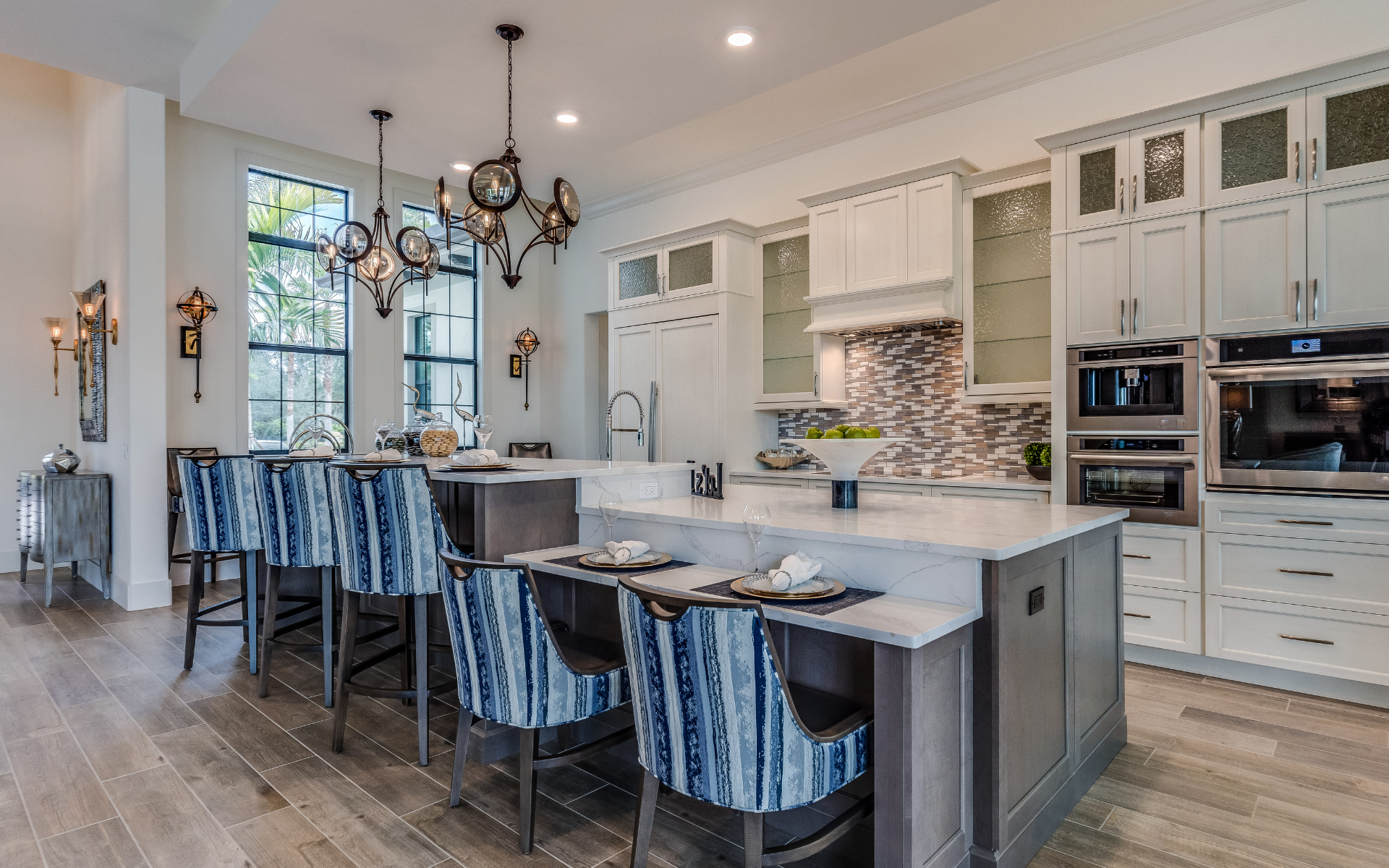
Cabinet Box Construction
The cabinet box refers to the main body of the cabinet without doors attached. Most quality cabinets use plywood or engineered wood sides, backs, tops, and bottoms. Avoid cabinets with particle board as it won’t hold screws well. Pay attention to
- Materials – Plywood and solid wood are best
- Joinery – Dovetail joints last longer than staples or glue
- Thickness – At least 3/4” thick panels should be used
The National Kitchen and Bath Association recommends a minimum of 42 to 48 inches between cabinets and islands or countertops to allow adequate workspace.
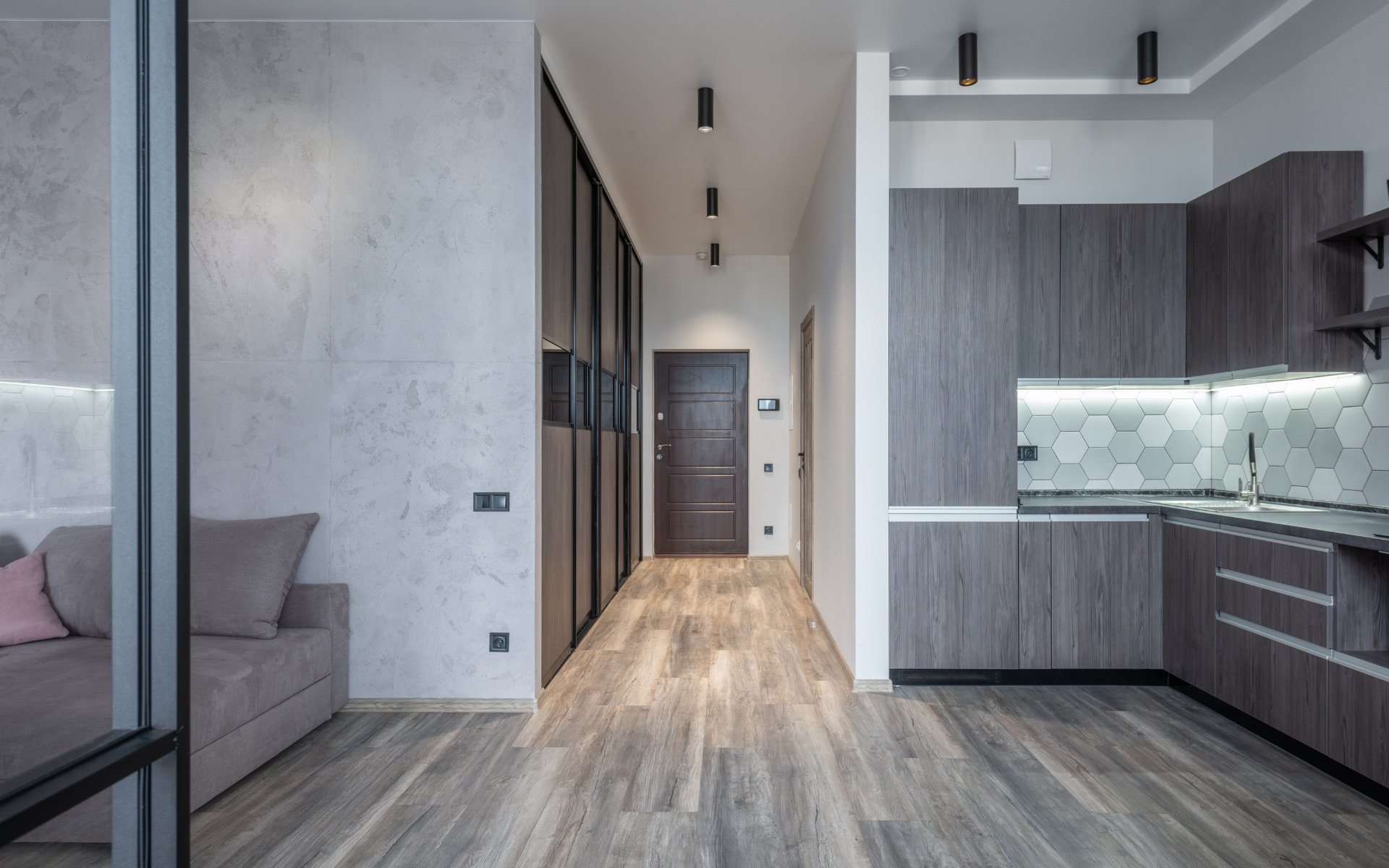
Cabinet Doors: Shaker, Inset, Laminate & More
Cabinet door styles encompass everything from plain Shaker-style to highly ornamental raised panels and insets. Choose doors to match your kitchen’s style:
- Shaker-Style Doors – A versatile flat panel with a frame around the outside. Looks clean and simple.
- Raised panel – Center panel is raised and surrounded by a frame. Classic and decorative looking.
- Slab – A simple flat, solid door without a frame. Provides a streamlined look.
- Plastic Laminates – Melamine-coated engineered wood. Easy to clean at a budget price.
- Glass – Glass panels let you show off pretty dishes and decor.
- Inset – Doors mount inside the face frame for a seamless look.
Interior Storage Solutions
Your kitchen cabinets set the tone for the whole room. They make up a huge portion of the visual real estate in your kitchen, so you want to make sure you get it right. The cabinets you select need to match your cooking and storage needs, fit the kitchen layout and dimensions, complement the overall design aesthetic, and meet your budget requirements.
Don’t forget about organizational components for the inside of your cabinets:
- Shelves – Adjustable shelves allow you to customize storage.
- Drawers – Great for utensils, cutting boards, and more. Full extension drawer glides are best.
- Pull-out trays – Help maximize cabinet depth. Perfect for spices, pans, and food items.
- Wine glass holders, tray dividers, and other inserts – Keep items secure and neatly organized.
- Wastebasket pull-outs – Hide garbage/recycling bins for a cleaner look.
- Cookware organizers – Keep pots, pans, and lids accessible but out of the way.
- Appliance garages – Hide small appliances like a mixer or toaster behind a door.
- Lazy Susans – Spinning trays make items in corner cabinets accessible.
Popular Kitchen Cabinet Styles
Beyond the construction and door types, there are distinct kitchen cabinet options to give your kitchen the right look and feel:
1. Shaker-Style Cabinets
With their simple, clean lines and visible rail and stile framework, Shaker cabinets offer a flexible style. They work great in both modern and traditional kitchens. Versatile Shaker cabinets feature a flat recessed center panel and thin frame around the cabinet front. Their simplicity showcases the woodgrain beautifully.
2. Modern Cabinets
Modern kitchen cabinets embrace straight, sleek lines and a minimalist, uncluttered look. They forgo ornate details for a polished, contemporary style. Modern cabinets work perfectly in open, airy kitchens featuring glossy surfaces and industrial accents. Stick with flat slab cabinet doors and drawer fronts, metal hardware, and frameless cabinet construction.
3. Rustic Cabinets
Rustic cabinets exude cozy farmhouse charm with visible wood grains and textures. Knots, nicks, and dings in repurposed wood add to the rustic appeal. Often paired with vintage-inspired hardware, rustic cabinets feature darker finishes and visible saw marks for a timeworn look. Add glass-front doors to soften the style.
4. Transitional Cabinets
Split the difference between traditional and contemporary with versatile transitional cabinets. Transitional kitchens balance modern simplicity and clean lines with classic details like raised panels and understated hardware. Rich wood grains, an even mix of cabinet styles, and muted two-tone colors embody this elegantly understated look.
5. Painted Cabinets
Painted cabinets provide a quick and affordable kitchen update. By painting the cabinets white or a bold, dramatic color you can transform the whole look of your kitchen. The most popular painted cabinet colors are white, light gray, navy, and black. Use high-quality cabinet paint and prepare surfaces properly for a smooth, durable finish.
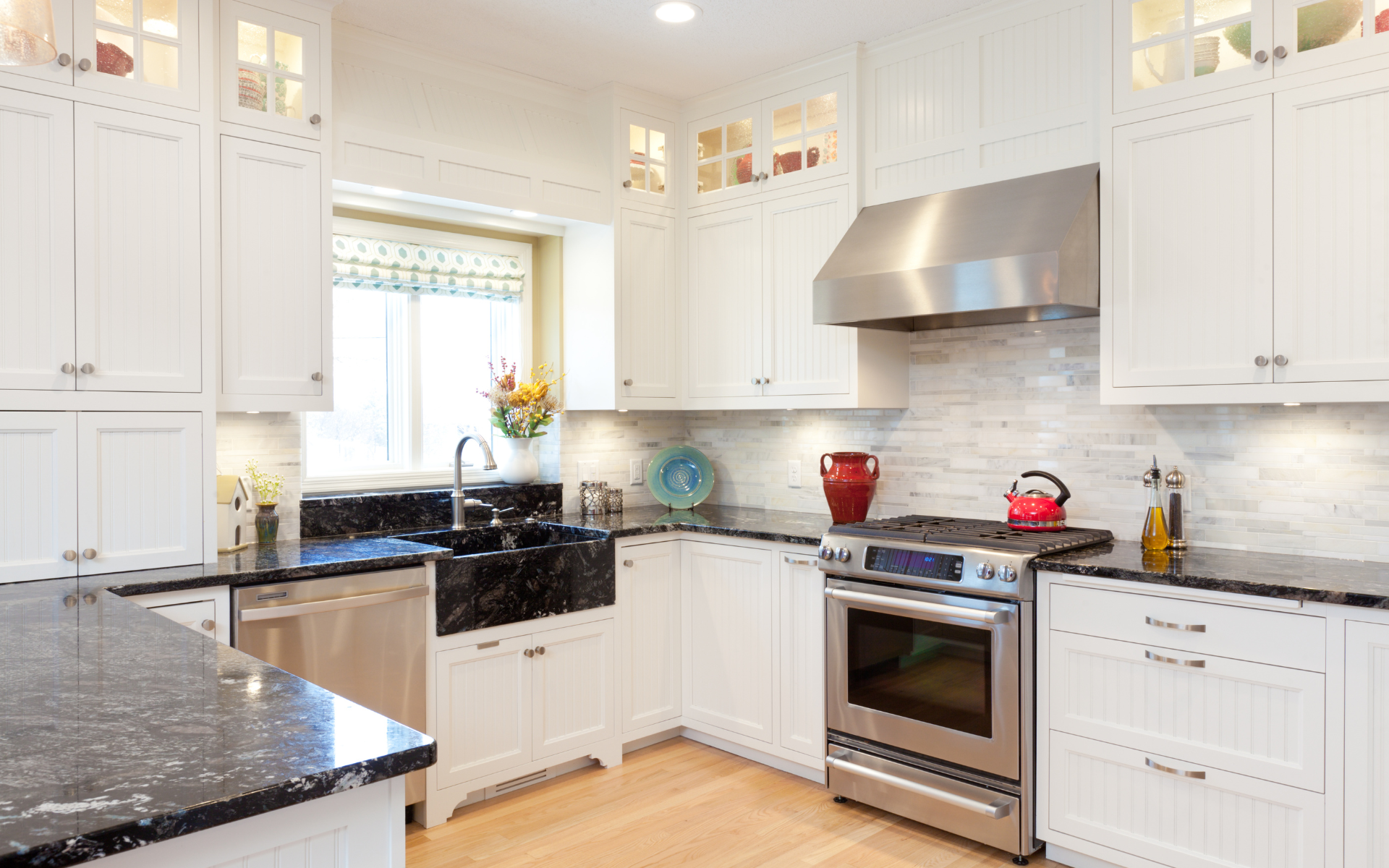
Tips for Selecting the Best Kitchen Cabinets
Ready to choose your dream kitchen cabinets? Keep these tips in mind:
- Take measurements and draw up a floor plan with accurate dimensions. Have an idea of your ideal layout before shopping. This will help you select the right cabinet sizes and configurations.
- Decide on a style and color scheme. Look at kitchen photos online or in magazines to find inspiration. This will guide your cabinet door, finish, hardware, and decorative choices.
- Determine your budget upfront and stick to it. Kitchen cabinets span a vast range from economy to luxury. Know how much you can spend before falling in love with options out of reach.
- Don’t forget height! Standard wall cabinets are 30”, base cabinets 36”. However, adjusting heights can maximize storage and personalize the space.
- Pick durable, moisture-resistant materials that will hold up in the kitchen over time. Solid wood doors with veneer or PVC laminate finishes are good options.
- Focus on quality door hinges and drawer glides. These ensure cabinets open, close, and operate smoothly for years.
- Don’t overlook lighting. Under cabinet and interior lighting keep cabinets bright and contents visible.
- Include organizational elements like pull-out shelves, trays, and wine racks to optimize storage space.
The right kitchen cabinets set the functional and aesthetic foundation of your kitchen space. Take the time to carefully evaluate all the options and choose cabinets tailored to your space, cooking habits, and style preferences. With some thoughtful planning upfront, you’ll end up with a stunning, highly functional new kitchen you’ll enjoy for years to come.
Wrap-Up
Kitchen cabinets represent a significant investment and presence in your home. While the process can seem daunting given the myriad of options, keeping the key considerations in mind will guide you to success. Determine your style, budget, and organizational needs. Look for quality materials and construction in cabinet boxes and doors suited to your kitchen’s size and layout. Include smart storage solutions within the cabinets as well.
Take your time, understand the different cabinet types available, and work with experts to bring your ideal design to life. With the guidelines above and some thoughtful planning during this exciting process, the payoff of your dream kitchen awaits. The right set of cabinets tailored to your family will result in a beautiful, highly functional heart of your home where you can create memories for years to come.

